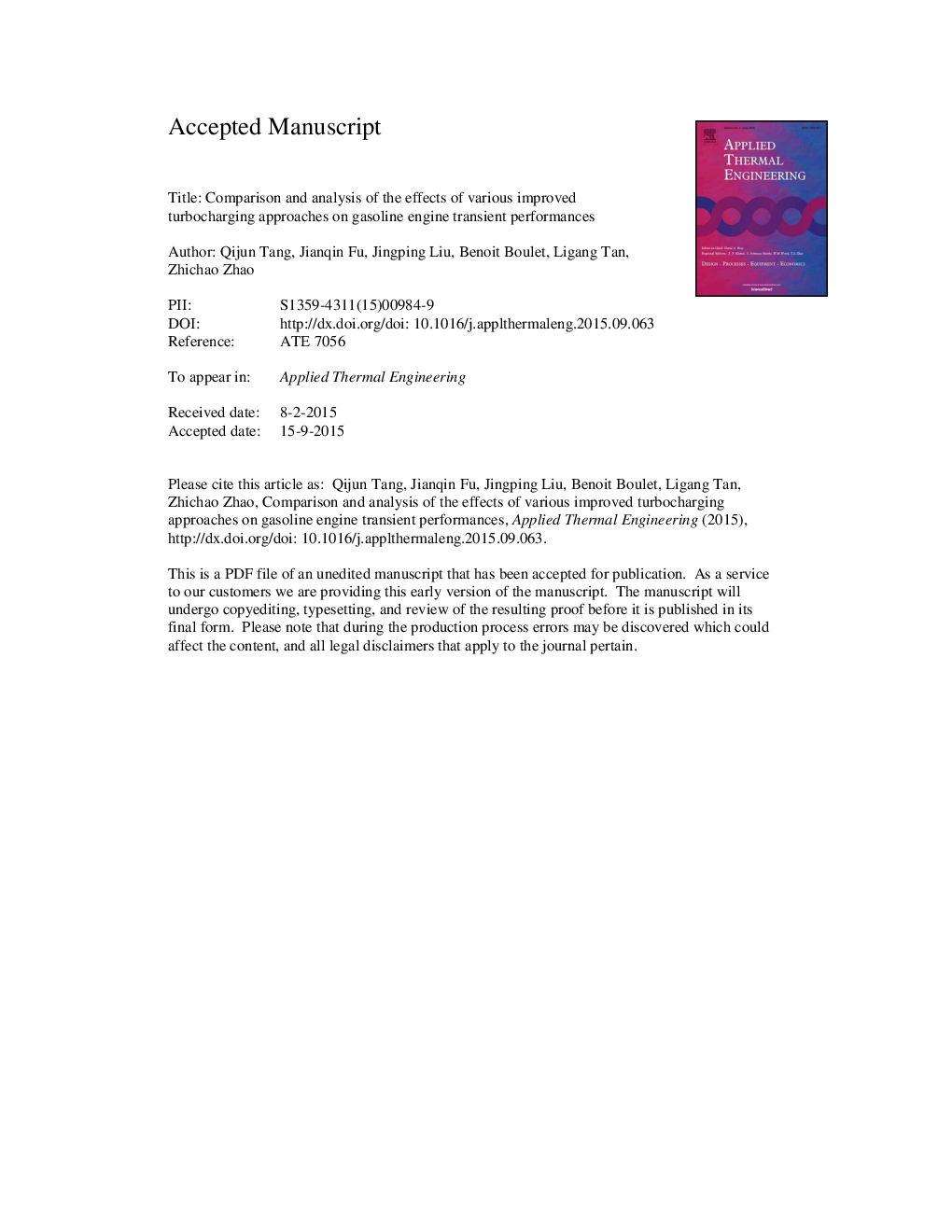| Article ID | Journal | Published Year | Pages | File Type |
|---|---|---|---|---|
| 7048788 | Applied Thermal Engineering | 2016 | 22 Pages |
Abstract
In this paper, several kinds of improved modes for exhaust gas turbocharging (EGT) have been investigated on the transient performances, including steam-assisted turbocharging (SAT), electronically controlled turbocharging (ECT) and supercharger-exhaust gas turbocharging (SET). A turbocharged gasoline engine was employed as the study object, which was conducted bench test firstly to get basic data for building and calibrating the simulation model. Then, an accurate and reliable GT-Power model in steady and transient engine operation was developed. On this basis, the transient processes of four types of engines: EGT engine, SET engine, SAT engine and ECT engine were investigated by simulation and comparative analysis. The results show that SET, SAT and ECT can reduce the response time and fuel consumption in acceleration process. The response time of various turbocharging approaches follows the descending sequence of EGT, SAT, ECT and SET. At the speed of 2000âr/min (from idling to full load), compared with EGT engine, the specific fuel consumption (SFC) of SET engine is decreased by 23.3%, while it can be reduced by 38.2% and 36.3% in SAT engine and ECT engine, respectively. Finally, to reveal the improvement potentials of SAT and ECT, both of them were re-matched with a larger turbine without wastegate. The results indicate that the torque and thermal efficiency of SAT and ECT engines can be further improved, while the acceleration equilibrium time is increased.
Related Topics
Physical Sciences and Engineering
Chemical Engineering
Fluid Flow and Transfer Processes
Authors
Qijun Tang, Jianqin Fu, Jingping Liu, Benoit Boulet, Ligang Tan, Zhichao Zhao,
